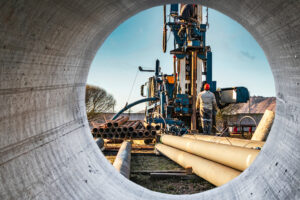The current situation between Russia and Ukraine will increase demand for oil rig production from North and South America. Reuters reports that the U.S. is expected to increase its crude oil output to 720,000 barrels per day or 11.91 million barrels per day. A Texas Tribune report states that Texas will be responsible for almost half of with 5.3 million barrels per day in 2022, with Texas possibly setting a record high in 2023 with 5.7 million barrels per day. In South America, Brazil has become the #1 producer of crude oil. As of 2021, the country now extracts 2.9 million barrels per day with Mexico coming in second with 1.7 million barrels per day.
Changes in Technology and Oil Rig Practices
In the last decade, technologies like horizontal drilling and hydraulic fracturing allowed the US to double its daily output. Currently, the Texas Permian Basin remains the most productive area to invest in. The area has attracted both Exxon Mobile and BP who spend billions of dollars in the region. Similarly, favorable policies and government support allowed Brazil producers to increase production steadily since 2010. The net effect of these increases means Brazil remains the most attractive investment region on the South American continent.
As production quantities on both continents continue to increase, producers are starting to run into technical resource shortages. While this can influence the growth, current forecasts maintain that the US will remain the world’s top producer well into the next decade. The Energy Information Administration expects U.S. crude output to increase from 940,000 bpd to 12.85 million bpd in 2023.
Both upstream and downstream organizations and manufacturers will need to ramp up operations. This will ensure their efforts to keep up with the production increase. Oil Country Tubular Goods (OCTG) manufacturers need to ensure they can handle the demand for new equipment. Besides, producers will continue to commission new wells and oil rigs.
Production Indicators for North and South American Oil Rigs
While the increased production quantities bode well for the respective countries, it’s important to remember that demand is also steadily rising. Brazil’s economic prosperity resulted in greater consumption, with the latest forecasts indicating its exporter position may be in jeopardy. The U.S. has also seen an increase in oil consumption. U.S. consumption is set to rise from 730,000 bpd to 20.51 million bpd in 2022.
The Texas shale boom meant that the state exported more oil than it imported in 2018. From the nearly one million barrel/day gap in 2015, the Houston-Galveston spike led to 2 million barrels per day of surplus exported last year.
The Future of Oil Rig Production in the Americas
Overall, the North American market leaped ahead of the rest of the world’s producers. This was due to adequate investment in upstream and downstream infrastructure. While the South American markets continue to grow, it will require additional investment to capitalize on the increases. As the demand for oil rig production in South America is trending upward, producers will need to invest in the region in the short term in order to maintain their export positions.
MSI Pipe Protection Technologies assists producers and manufacturers with superior pipe protection of their OCTG investments during all phases of the production cycle.




